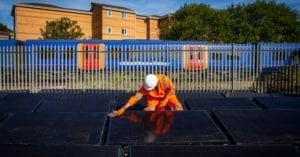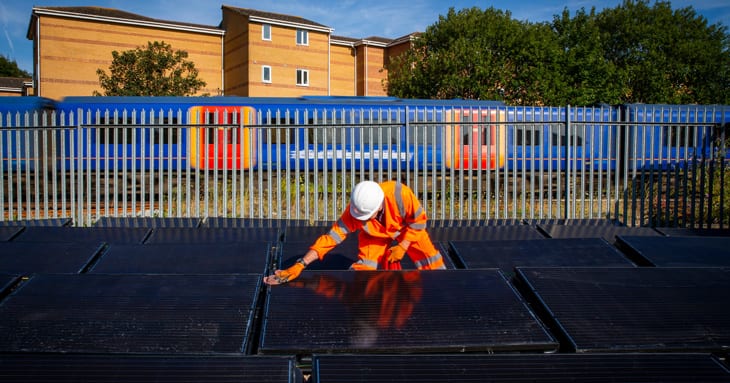A solar array located near Aldershot, Hampshire, UK, has become the first in the world to be connected to directly supply electricity to an adjacent railway line.
Comprising around 100 solar panels, the 30kWp solar test unit, delivered by Riding Sunbeams, is connected to an ancillary transformer on Network Rail’s Wessex Route’s traction system, with energy from the array set to power signalling and lights.
Electricity demand data is also being gathered from six potential community solar sites in the south of England. Putting all this real-world data together, will enable analysis of how to plug in much larger solar arrays to power trains.

By the end of 2020, Riding Sunbeams hopes to build and connect the world’s first ever full-scale community- and commuter-owned solar farm to the UK rail network.
Engineering consultancy Ricardo is managing monitoring equipment at multiple sites, working with Birmingham University to commission and review the energy model simulating this system.
This work aims to enable a better understanding of the energy production and use from the solar array, which will be used to establish the success of the Aldershot based test unit and forecast the opportunities for application on other parts of the rail network.
Funded by the UK’s Department for Transport through a competition delivered by InnovateUK, the First Light project was born out of an earlier study by 10:10 Climate Action and Imperial College London’s Energy Futures Lab, which showed that connecting solar panels directly to rail, tube and tram networks could meet a significant share of their electricity needs at a lower cost than electricity supplied via the grid today – without the need for public subsidy.
Colin McNaught, project director for Ricardo, said: “This is an extremely exciting project and opens up opportunities to utilise renewable energy technologies in ways not previously possible. The project has the potential to provide significant opportunities in enabling rail infrastructure operators and governments to deliver the environmental changes needed for a net-zero future.”





